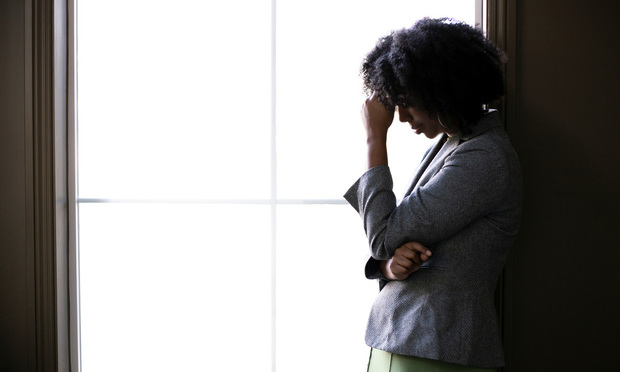Study Finds Minority Women Less Satisfied in Law School
Researchers hope that new data on the experience of minority women in law school will prompt frank discussions on law campuses and more support.
June 16, 2020 at 02:11 PM
4 minute read
How are race relations on law school campuses?
The answer to that complex question depends on who you ask. A mere 40% of minority women students surveyed as part of a new study on their law school experience gave race relations on campus a positive rating. That figure was 70% among white male students.
That stark disparity is among the hundreds of data points compiled in "Women of Color–A Study of Law School Experiences," a joint research effort between the NALP Foundation and the University of Texas School of Law's Center for Women in Law. The report claims to be the first in-depth look at how and where the law experience of minority women differs from that of their white and minority male classmates. Researchers hope that the findings will spur law schools to examine their practices and find ways to better support their minority women students. That, in turn, may help bolster the number of women in the legal profession, they say.
"There was this hunch that there was a disparity and a difference in what women of color experienced as they went through law school, but no one had quantified that," said Veronica Vargas Stidvent, the executive director of the Center for Women in Law. "A lot of the focus has been on practitioners. This is the first study to look at: What happens in law school that begins to shape those legal careers, and disparities in the legal profession?"
Researchers surveyed more than 4,000 law students—nearly 800 of whom are minority women—on 46 law campuses during the 2017-18 academic year. The survey asked about everything from their classroom experiences and their employment support to their grades and expected level of debt from law school.
The overarching takeaway from the extensive study is that minority women are less satisfied with their law school experience than their white peers. Among minority women, 82% reported that they were "satisfied" with their law school experience, compared with 89% of white women. Just 30% of minority women said they were "extremely satisfied" with their law school experience, compared with 44% of white men.
Among other findings:
- Nearly a third of minority women, 31%, reported having seriously considered leaving law school, compared with 24% of white women and 22% of white men. Not enjoying law school; financial debt; and not fitting in socially were the most commonly cited reasons minority women gave for why they had considered leaving law school.
- Minority women expect to graduate with more educational debt than their white peers. Among minority women, 41% anticipate having more than $100,000 in educational debt, compared with 29% of white women and 28% of white men.
- More than half of minority women, 52%, said they have had adverse interactions with classmates or faculty that negatively impacted their academic performance. Just 21% of white men reported such interactions. Minority women also reported feeling less comfortable raising their hand in class than their white peers.
- Just 6% of minority women 2Ls said they applied for clerkships, compared with 21% of white men and 12% of white women. Among minority women, 47% said they were encouraged to apply for a clerkship, compared with 55% of white men and women.
One bright note among the data, according to NALP Foundation president Fiona Trevelyan Hornblower, is that minority women law students on the whole have more interaction with career services offices. The survey data show that they are more likely to attend career services events, and they reported having a supportive career services office as one of the most important factors in obtaining a job. White men, by contrast, were far more likely to rank grades as a key to finding employment. That disparity is one area that law schools can focus on, in terms of ensuring that all students understand the factors that employers tend to weigh most heavily, including the importance of grades, Vargas Stidvent said.
"This is a starting point for a lot of further discussion, because the data shows some interesting disparities in very different issue areas," she said. "This, I think, will generate a lot of conversations in law schools, with employers, and among students that really delve deeper into why these differences are occurring and what can be done about them."
This content has been archived. It is available through our partners, LexisNexis® and Bloomberg Law.
To view this content, please continue to their sites.
Not a Lexis Subscriber?
Subscribe Now
Not a Bloomberg Law Subscriber?
Subscribe Now
NOT FOR REPRINT
© 2025 ALM Global, LLC, All Rights Reserved. Request academic re-use from www.copyright.com. All other uses, submit a request to [email protected]. For more information visit Asset & Logo Licensing.
You Might Like
View All
University of New Hampshire Law School Launches Specialized Health, Life Sciences Program

Supreme Court Takes Up Case Over Approval of Religious Charter School

The Week in Data Jan. 24: A Look at Legal Industry Trends by the Numbers

Trending Stories
Who Got The Work
J. Brugh Lower of Gibbons has entered an appearance for industrial equipment supplier Devco Corporation in a pending trademark infringement lawsuit. The suit, accusing the defendant of selling knock-off Graco products, was filed Dec. 18 in New Jersey District Court by Rivkin Radler on behalf of Graco Inc. and Graco Minnesota. The case, assigned to U.S. District Judge Zahid N. Quraishi, is 3:24-cv-11294, Graco Inc. et al v. Devco Corporation.
Who Got The Work
Rebecca Maller-Stein and Kent A. Yalowitz of Arnold & Porter Kaye Scholer have entered their appearances for Hanaco Venture Capital and its executives, Lior Prosor and David Frankel, in a pending securities lawsuit. The action, filed on Dec. 24 in New York Southern District Court by Zell, Aron & Co. on behalf of Goldeneye Advisors, accuses the defendants of negligently and fraudulently managing the plaintiff's $1 million investment. The case, assigned to U.S. District Judge Vernon S. Broderick, is 1:24-cv-09918, Goldeneye Advisors, LLC v. Hanaco Venture Capital, Ltd. et al.
Who Got The Work
Attorneys from A&O Shearman has stepped in as defense counsel for Toronto-Dominion Bank and other defendants in a pending securities class action. The suit, filed Dec. 11 in New York Southern District Court by Bleichmar Fonti & Auld, accuses the defendants of concealing the bank's 'pervasive' deficiencies in regards to its compliance with the Bank Secrecy Act and the quality of its anti-money laundering controls. The case, assigned to U.S. District Judge Arun Subramanian, is 1:24-cv-09445, Gonzalez v. The Toronto-Dominion Bank et al.
Who Got The Work
Crown Castle International, a Pennsylvania company providing shared communications infrastructure, has turned to Luke D. Wolf of Gordon Rees Scully Mansukhani to fend off a pending breach-of-contract lawsuit. The court action, filed Nov. 25 in Michigan Eastern District Court by Hooper Hathaway PC on behalf of The Town Residences LLC, accuses Crown Castle of failing to transfer approximately $30,000 in utility payments from T-Mobile in breach of a roof-top lease and assignment agreement. The case, assigned to U.S. District Judge Susan K. Declercq, is 2:24-cv-13131, The Town Residences LLC v. T-Mobile US, Inc. et al.
Who Got The Work
Wilfred P. Coronato and Daniel M. Schwartz of McCarter & English have stepped in as defense counsel to Electrolux Home Products Inc. in a pending product liability lawsuit. The court action, filed Nov. 26 in New York Eastern District Court by Poulos Lopiccolo PC and Nagel Rice LLP on behalf of David Stern, alleges that the defendant's refrigerators’ drawers and shelving repeatedly break and fall apart within months after purchase. The case, assigned to U.S. District Judge Joan M. Azrack, is 2:24-cv-08204, Stern v. Electrolux Home Products, Inc.
Featured Firms
Law Offices of Gary Martin Hays & Associates, P.C.
(470) 294-1674
Law Offices of Mark E. Salomone
(857) 444-6468
Smith & Hassler
(713) 739-1250









